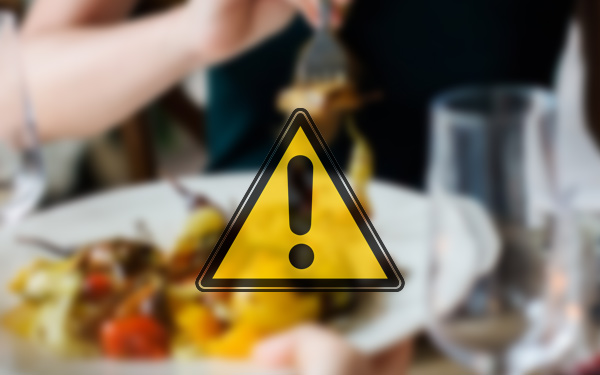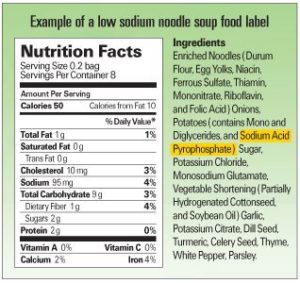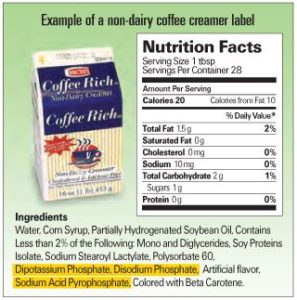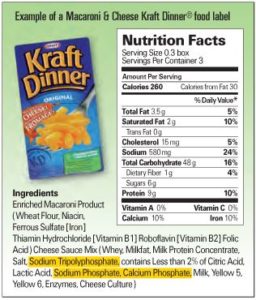Watch out for Phosphate Additives!

By June Martin
 Our kidneys perform many important functions, including the removal of any extra phosphorus from the blood. But when kidneys are not functioning well, phosphorus levels can rise, which can lead to serious complications like renal bone disease and calcium deposits in the heart.
Our kidneys perform many important functions, including the removal of any extra phosphorus from the blood. But when kidneys are not functioning well, phosphorus levels can rise, which can lead to serious complications like renal bone disease and calcium deposits in the heart.
So how can you avoid too much phosphorus in your diet? The answer is: by limiting foods that are high in phosphorus and by avoiding foods that contain phosphate additives. But that’s easier said than done!
Sometimes it seems as if kidney patients need to be detectives when it comes to reading labels. A quick glance at a Nutrition Facts table gives you an idea of sodium content but won’t give you enough information when it comes to phosphorus (or phosphate). Food manufacturers are not required to list the amount of phosphorus in foods on food labels.
Because almost all foods contain some phosphorus, it is impossible to avoid it altogether. Your dietitian will likely recommend that you limit your intake of milk, whole grains, lentils, nuts, seeds, chocolates and foods with phosphate additives.
 Phosphate additives are added to foods for many reasons – e.g. as a leavening agent, a preservative, and a flavour or colour enhancer. The phosphates in food additives are especially dangerous since our bodies absorb them much more efficiently than the phosphates that occur naturally in foods like milk, lentils and whole grains.
Phosphate additives are added to foods for many reasons – e.g. as a leavening agent, a preservative, and a flavour or colour enhancer. The phosphates in food additives are especially dangerous since our bodies absorb them much more efficiently than the phosphates that occur naturally in foods like milk, lentils and whole grains.
Many products marketed as “low sodium” are loaded with phosphate additives
Some researchers estimate that phosphate additives can almost double your total intake of phosphorus! To make matters worse, many low sodium products have replaced the salt with phosphate additives.
Unfortunately there is no complete list of all foods containing phosphate additives because there are too many!
Read the labels
On food labels, look for words that include “phosphate” or “phosphoric” such as:
 • sodium phosphate
• sodium phosphate
• sodium aluminum phosphate
• sodium tripolyphosphate
• sodium acid pyrophosphate
• monocalcium phosphate
• phosphoric acid
The 2 labels shown in this article are examples.
Avoid the following foods because they typically contain phosphate additives:
• Processed cheeses, spreadable cheeses or slices
• Non dairy creamers
• Packaged macaroni and cheese
• Colas
• “Seasoned” meats, poultry and seafood
• Deli meats, bacon
• Bakery products such as biscuits, muffins and snack cakes, frozen pancakes and waffles
 Be aware that deli meats may be stocked in the fresh meat counters at your local grocery stores. Insist on getting access to the labels!
Be aware that deli meats may be stocked in the fresh meat counters at your local grocery stores. Insist on getting access to the labels!
Reading labels is the key! Compare products and choose those without phosphate additives. Choose fresh, unprocessed food more often and try low phosphorus recipes like the ones found in Spice It Up!
Sometimes dietary modifications aren’t enough to keep phosphorus levels in a safe zone, as most of our readers know and have experienced. In this case, your doctor may prescribe phosphate binders. Phosphate binders decrease the absorption of phosphorus from food into the blood.
For more information, visit Health Canada’s food additive info site:
http://www.hc-sc.gc.ca/fn-an/securit/addit/index-eng.php

